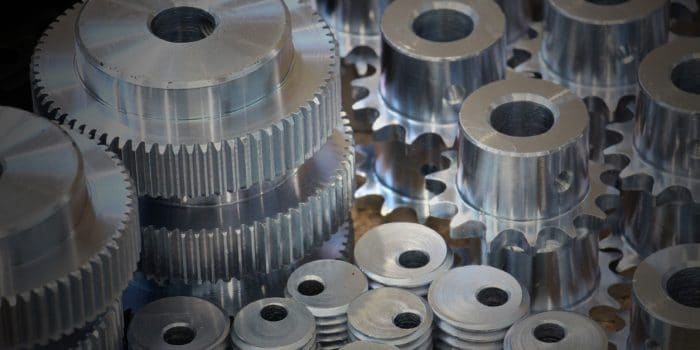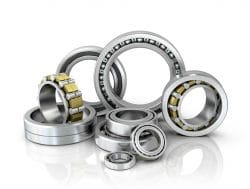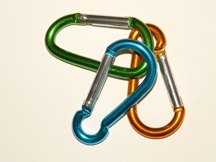Anodizing vs. Chromating – Metal Fabrication Finishes

If you are a regular reader of our blogs, it has probably become apparent the metal fabrication is an intricate and involved process. Of all the stages involved, one of the last, yet most important, is choosing the right finish. While we prefer to finish with a powder coat application done in-house, there are moments when a powder coat will not suffice, in those instances, a chemical dip process will finish your metal parts and protect them. While there are seemingly countless finishes to choose from, anodizing, and chromating are popular finish choices. If you are not familiar with these finishes and the processes that go into creating them, keep reading.
What is Anodizing?
Anodizing is best described as a process by which metal is electrochemically converted into a durable, corrosion-resistant, anodic oxide finish. Anodized finishes are most often used for decorative purposes. The best kind of metal for anodizing is aluminum. Other nonferrous metals like titanium and magnesium can easily be anodized as well.
The anodizing process starts by soaking aluminum is a solution of acid electrolyte and running electric current through the bath. Inside the tank, a negatively charged cathode is mounted. Acting as an anode, the metal allows for the release of oxygen ions that interact with the metal’s atoms. The result is anodization. This is a naturally occurring process that when carried out in a highly controlled environment, produces exacting results.
What is Chromating?
 Chromating is another popular finish for metals like zinc, magnesium, copper, tin, and aluminum. Much like anodizing, chromating finishes are popular for their corrosion-resistant qualities. Even though the finish is only a thin layer, it is highly durable and favorable when metals need to be transported. Adhesion to organic coatings is yet another advantage of chromating finishes.
Chromating is another popular finish for metals like zinc, magnesium, copper, tin, and aluminum. Much like anodizing, chromating finishes are popular for their corrosion-resistant qualities. Even though the finish is only a thin layer, it is highly durable and favorable when metals need to be transported. Adhesion to organic coatings is yet another advantage of chromating finishes.
A popular finish for hardware like screws, hinges, and tools, the chromating process begins by immersing the chosen metal is a bath of chemicals until a film is formed. Bath solutions can vary depending on the desired finish. However, most consist of varying levels of hexavalent chromium compounds like chromates or dichromates.
Once the metal has been soaked, it has then removed, rinsed, and dried. This simple process has gained increased popularity because it can be carried out at room temperature and only requires a few short minutes of immersion.
When chromating coats are first applied, they are somewhat soft and gelatinous. As the finish continues to dry over the course of 24 hours, it hardens to the point that it becomes hydrophobic.
When carrying out the chromating finish process, safety is a paramount priority. Hexavalent compounds have come under considerable scrutiny due to their carcinogenic nature. Only a few shops remain in the Portland area that offers chromating because of these tight health-related regulations. At Metafab, we have a long history of working with these shops and are able to offer quick turns when this process is needed.
Final Thoughts
There is no shortage of finishes to choose from for your metal prototypes. With so many choices, making the right decision for your metal finish can be a confusing, if not daunting process. At Metafab, we are happy to help you understand the different kinds of finishes and the processes by which they come about. While we hope that you will select a powder coat finish, because we are able to perform that process quickly and control the quality by doing this in house, when anodizing or chromating is needed, we can help you with this too! If you have questions or are curious to find out more, give us a call today.
